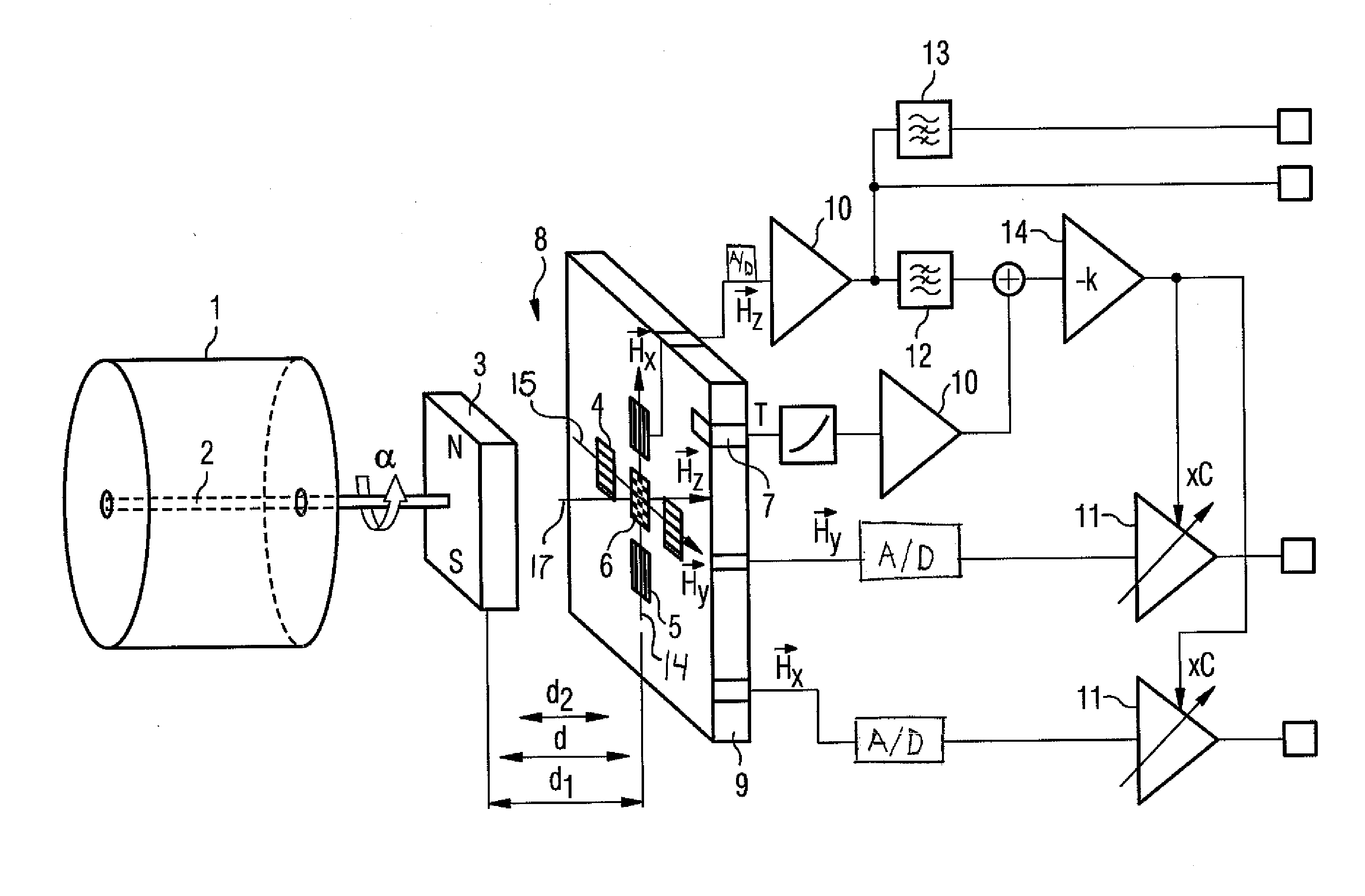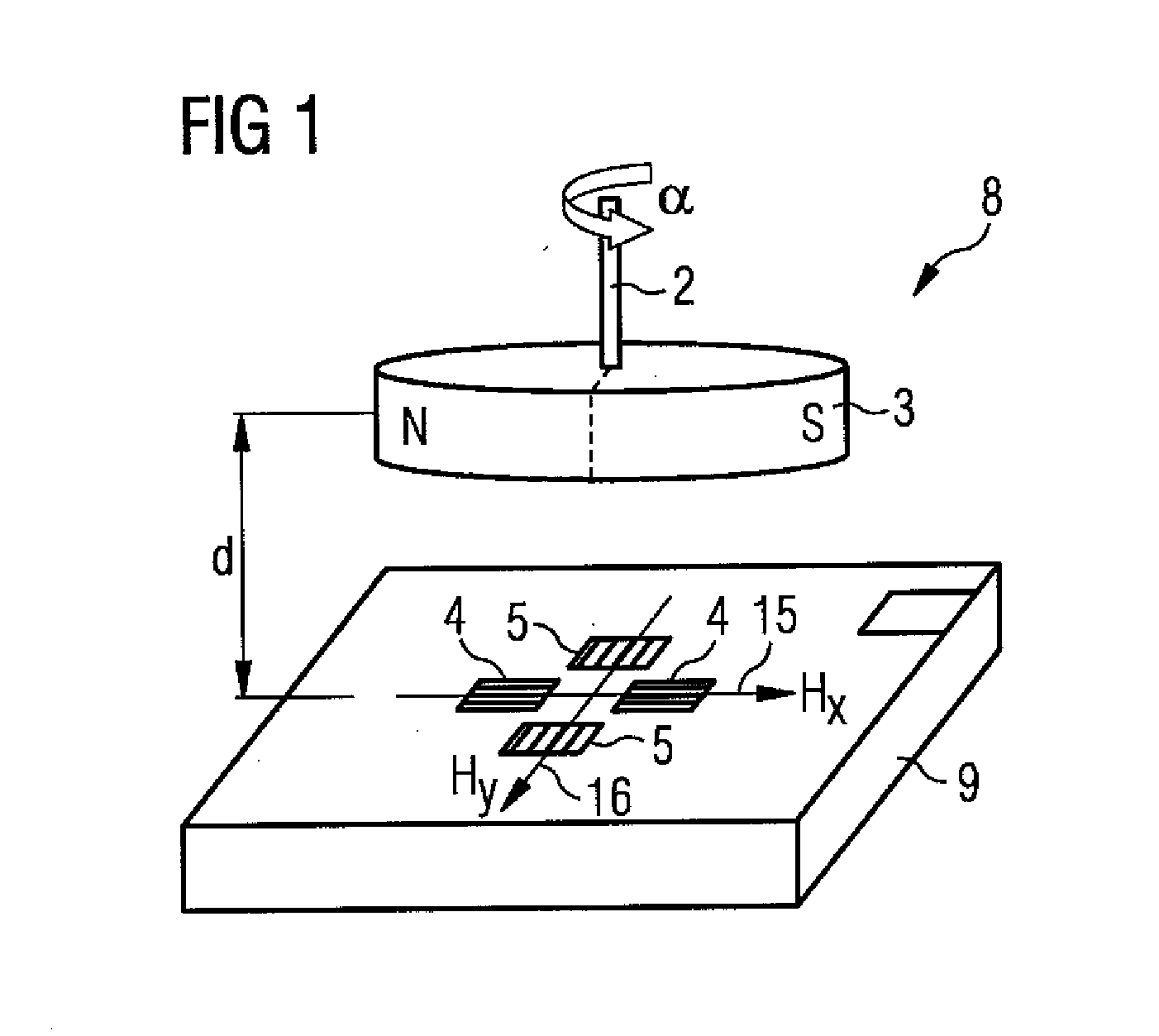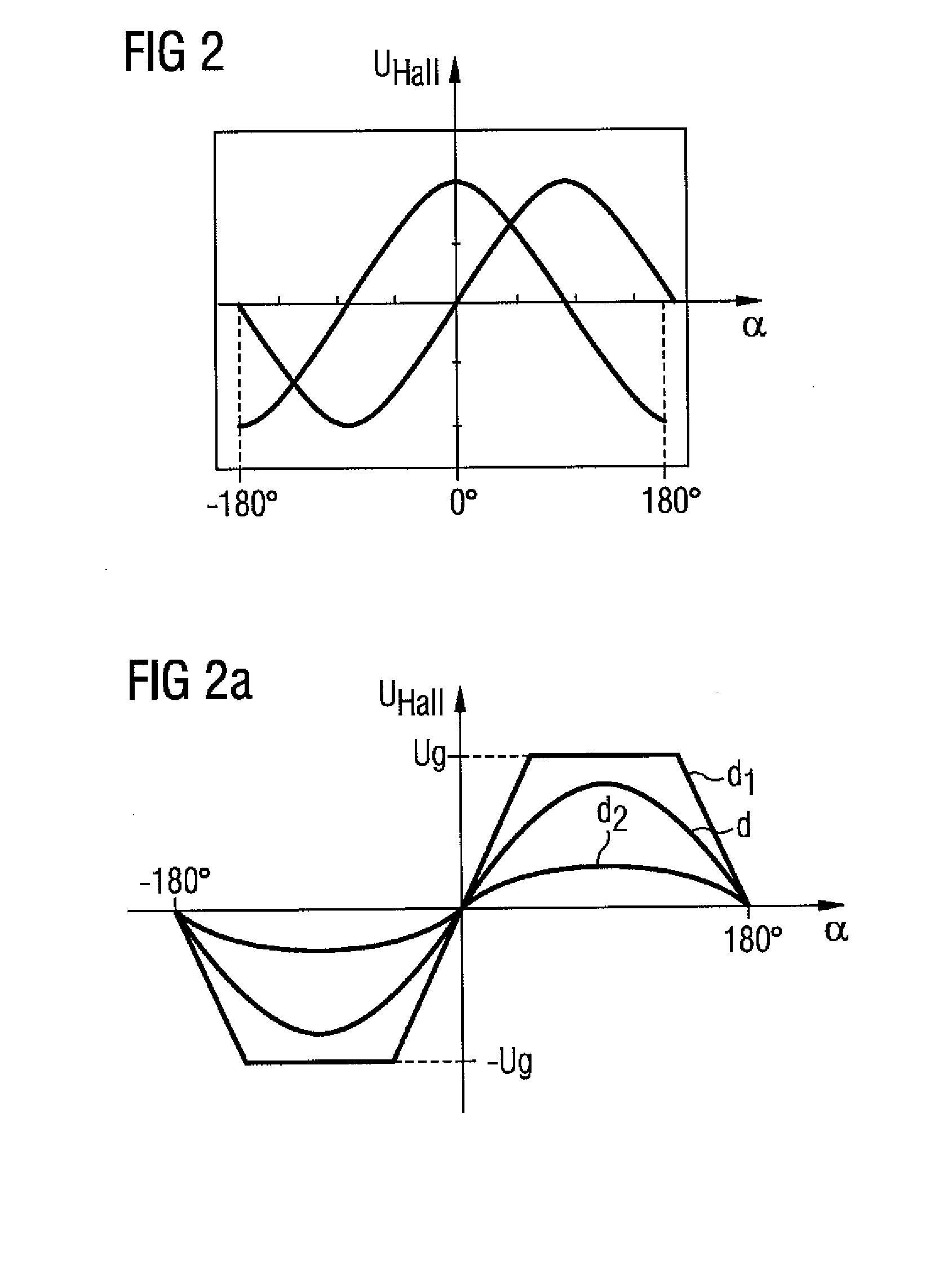Method for analyzing signals from an angle sensor
- Summary
- Abstract
- Description
- Claims
- Application Information
AI Technical Summary
Benefits of technology
Problems solved by technology
Method used
Image
Examples
Embodiment Construction
[0023]FIG. 1 shows an angle sensor 8 with a rotor 2 of a brushless electric motor on which a rotatable element 3 for varying a field is arranged. The rotatable element 3 is embodied here as a dipole magnet, wherein the north pole N and the south pole S are shown. Depending on the rotational angle α of the rotor 2 relative to the brushless electric motor, a first linearly independent vector 15 of the field strength denoted here by HX, and a second linearly independent vector 16 of the field strength, denoted here by HY, are induced in the sensor chip 9 of the angle sensor 8. These vectors 15, 16 are generated by a magnetic field and are strictly dependent on the rotational angle α and the associated position of the rotatable element 3. The first sensor element 4, embodied as a vertical Hall element, and the second sensor element 5, embodied as a vertical Hall element in the sensor chip 9, senses the components of the first linearly independent magnetic field vector 15 and of the seco...
PUM
 Login to View More
Login to View More Abstract
Description
Claims
Application Information
 Login to View More
Login to View More - R&D
- Intellectual Property
- Life Sciences
- Materials
- Tech Scout
- Unparalleled Data Quality
- Higher Quality Content
- 60% Fewer Hallucinations
Browse by: Latest US Patents, China's latest patents, Technical Efficacy Thesaurus, Application Domain, Technology Topic, Popular Technical Reports.
© 2025 PatSnap. All rights reserved.Legal|Privacy policy|Modern Slavery Act Transparency Statement|Sitemap|About US| Contact US: help@patsnap.com



